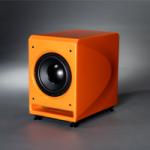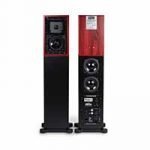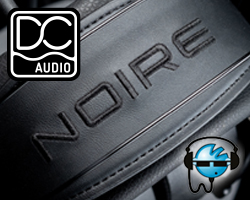WILSON LōKē SUBWOOFER REVIEW
Following his review of the Wilson Audio TuneTots where he touched on the LōKē Subwoofer, Stuart Smith looks at this £9K sub in a bit more detail.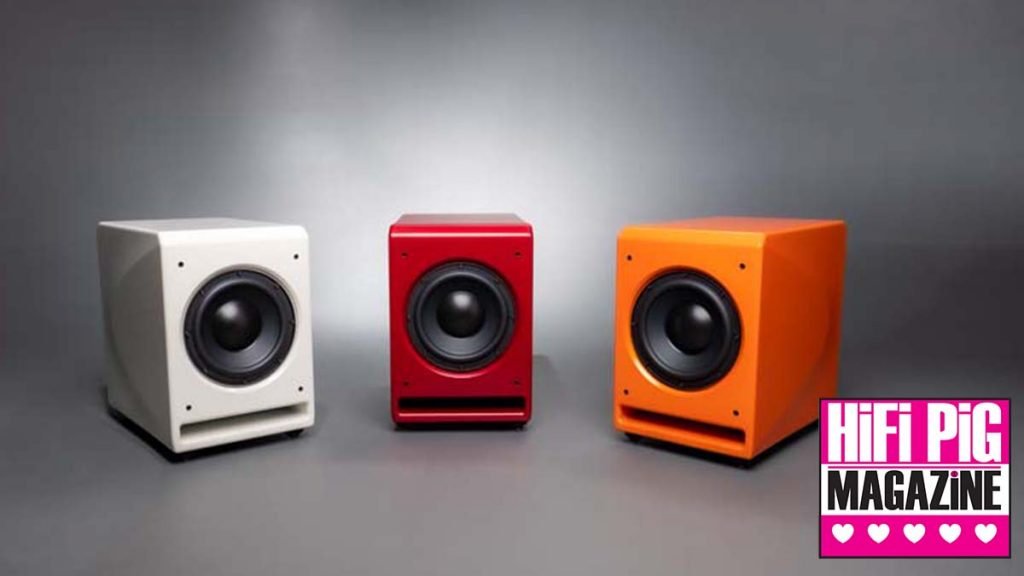
The Wilson LōKē was sent to me along with the Wilson TuneTot speakers by Absolute Sounds, the UK distribution company for Wilson. I’ve written a review of the TuneTots in which I mention the speakers being used with the LōKē sub and you can read my thoughts here. I’m not going to go into the whole history of Wilson Audio and whatnot as it was touched on in the TuneTots’ review. I’m also not going to bang on about the price or perceived value of the LōKē as I’ve already discussed my thoughts on that issue both in the TuneTots’ review and more generally here. In the UK the price of this sub is £8,998 in Standard colours; £9,500 in Upgrade colours; £10,998 in Premium Pearl colours.
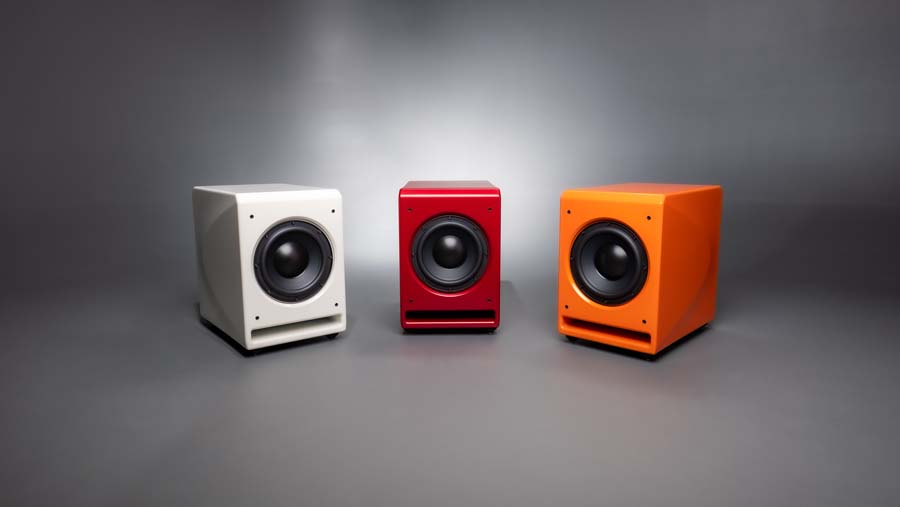
LōKē is avaialble in a wide range of colours with premium colours and finishes being more expensive.
LōKē was introduced earlier this year and is the smallest of the sub-woofers that the American company produces. The other subs Wilson Audio produce are the Wilson Audio Subsonic, Thor’s Hammer, and W.A.T.C.H. Dog. The WASAE at Wilson have used Wilson Audio’s extremely damped X-Material for the external enclosure, whilst a combination of X-Material and HDF make up the internal bracing support structure with the goal being a solid foundation for the woofer coupling.
Unpacking this 50Kg sub is an absolute delight and I am, as someone who unpacks a whole lot of heavy kit, thrilled to see that Wilson has put a good deal of thought into the unpacking process, particularly since having damaged my back several years ago lifting an amp out of badly thought out packaging. LōKē arrives in a large wooden crate that you will need two people and wheels to manoeuvre. However, remove the lid, where you are greeted with brochures, instruction booklets and a toolkit and footers box, then remove the top foam packing and the foam packing underneath the sub and you can then tilt the box and the sub itself onto the castors that are on the bottom of the sub itself. All you have to do then is wheel LōKē out and put it wherever you want it before putting on the included spikes. I absolutely love this attention to detail and it made what can be an absolute nightmare of a job into something that was quick, easy and an absolute doddle. Other manufacturers of heavy amps/speakers etc, please take note!!!
SPECIFICATIONS AND BUILD OF WILSON LōKē SUBWOOFER
As I mentioned, although the LōKē subwoofer is the most compact sub that Wilson offer, it’s by no means as compact as others we have used, or indeed own. It stands nearly 53cm high, 35cm and a bit wide, and 53cm and a bit deep. I mentioned the weight of LōKē being nigh on 50Kg but the overall packed weight is nearly 80Kg and you will need to take this into account when having it delivered.
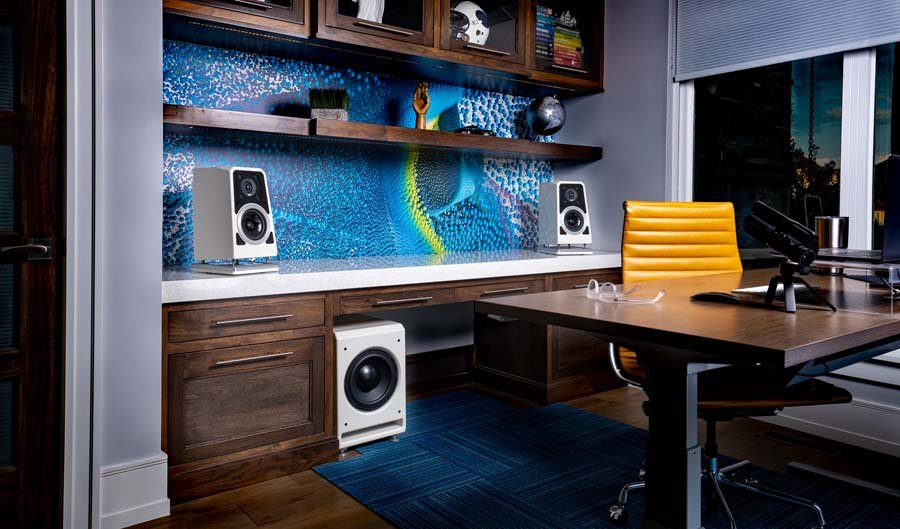
LōKē’s obvious partner is the Wislon TuneTot loudspeaker system, though it can be used with other loudspeakers.
Needless to say, the subwoofer is beautifully put together and finished and Wilson score top marks again in this respect!
Moving the air you have a 10 inch front-firing woofer that is allied to a 500 W power amplifier that will give you a frequency response of 20Hz to 250Hx +/-1dB). This response should be enough to satisfy the most bass hungry of people (Hello!) and obviously, there’s a load of options on the back of the sub to dial it into the system you are using it with and the room you are using it in; these include crossover frequency, crossover slope, phase, and level and come from Wilson’s ActivXO® Dual Subwoofer Crossover. The plate amp is an off-the-shelf model and not made by Wilson themselves.
Placement details are included in the manual (it’s very nicely produced) that comes with the sub, as does a CD of test tracks to help you set the sub up. The manual suggests that LōKē’s output will be reinforced by room boundaries and corners but also, sensibly, suggests that this may not necessarily be the most sensible placement for many. In the end, I preferred the sub placed between and behind the Wilson TuneTots I had in for review.
It’s a box. It’s a nice-looking box but at the end of the day, it’s a box with a speaker and a grille on the front of it. The control panel for LōKē is around the back and is well laid out, though pretty conventional looking for a subwoofer. On this panel there are analogue balanced and unbalanced inputs and outputs (XLR and RCA), an input level switch, a power mode switch, a feature menu display and control knob (more in a mo’), a USB input for control and then the AC input, switch and voltage selector. The outputs on the back of LōKē allow you to add one or more of the subs should need/want to.
The manual goes into detail about what most of these switches and input/outputs do and it’s beyond the scope of this article to go into detail about each of them as they are mostly fairly intuitive. However, it is worth mentioning that the USB input is for a bit of custom set up software that is available on request from Wilson – I saw no need to request it given everything I needed to play with and get LōKē set up was available from the small display and accessible via the Feature Control knob. There’s barely any “menu-diving” to cope with and it’s all pretty sensible to access and change. A couple of things here, none of which are exclusive to Wilson; the different parameters of the sub are on the back and controlled from the back which means that if you do have the sub in a corner then you have to keep pulling it in and out of position for each parameter change. Perhaps a Bluetooth-enabled Android/iOS app would be a smart idea? However, you go get plenty of control with LōKē and you get to change parameters of the High Pass Filter, The Low Pass Filter, The Sub-Sonic Filter, and then there’s a 2-Band Parametric EQ that you can play with to get the sub dialled in just as you like. Parameters you can change include the frequency range and slope of the three filters and the delay on the high pass, phase, and then the frequency range, level range and Q factor range on the parametric EQ. You can save up to three presets which I thought was a useful feature.
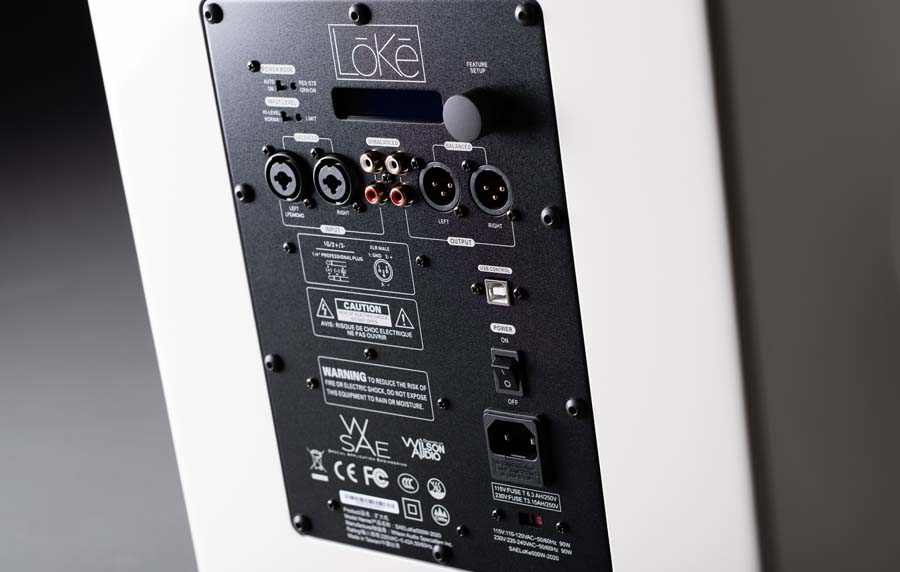
The plate amp on the back of the LōKē sub and its DSP control is accessed by a single dial/button and a small screen.
Also in the pack are a set of “Spikes and Diodes” which replace the castors that the sub comes fitted with. Full fitting instructions are included in the packaging but you do need two people for this procedure.
SET UP OF THE WILSON LōKē
Once it’s out of the shipping crate and where it’s going to reside the LōKē is a piece of cake to set up. Put one of the outputs of the pre into the inputs of the sub and then start to play with the different parameters for each of the settings that are available; these will vary depending on the room you are in, the positioning of the sub and the response of the speakers you are using. All in all, I got to a sound that I was very happy with in around twenty minutes, perhaps a bit less. Once done you can pretty much forget about the sub.
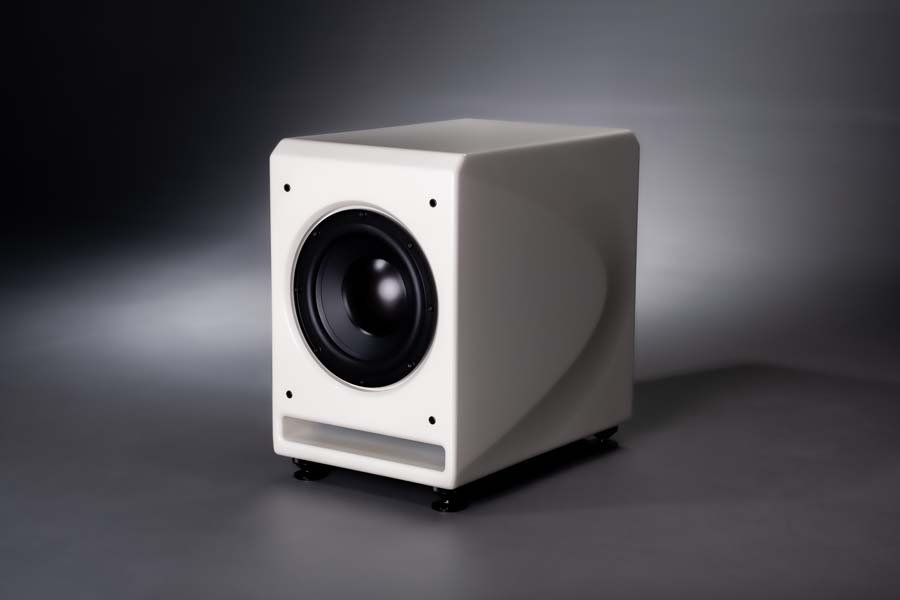
The front firing driver and port aided in placement in our room.
SOUND OF WILSON AUDIO LōKē
It works very well and I particularly like the fact that this is a front-firing sub as I’ve had issues with our REL downward firing subs exciting the floorboards in our several hundred year old house – not a good thing. This also means that, should you need, you can hide it away under a desk, unit, or whatever.
It does what any good sub should do and allows you to set it up in such a way as to be aurally invisible. By this I mean that once properly set up you shouldn’t be able to hear where the sub comes in and the main speakers take over.
One of the features that influence the sound, and something Wilson is passionate about, is the time alignment of their speakers, and the LōKē sub follows this pattern with you being able to change phase (in degree increments) to ensure the speakers and the sub are all firing together correctly. This shows in the coherent and invisible way that LōKē integrates into the system, leaving you with just music to enjoy, though that music is somewhat enhanced in the lower regions.
The bass that LōKē produces is fast and without wooliness to it, which in turn makes the music you are listening to fast-paced and exciting. Regular readers will know that slow and laggy bass is one of my pet hates.
The long and short of it is that LōKē works well at what it is designed to do when used with its stable-mates the TuneTots but it also worked equally well when I tried it with a pair of Xavian Perlas.
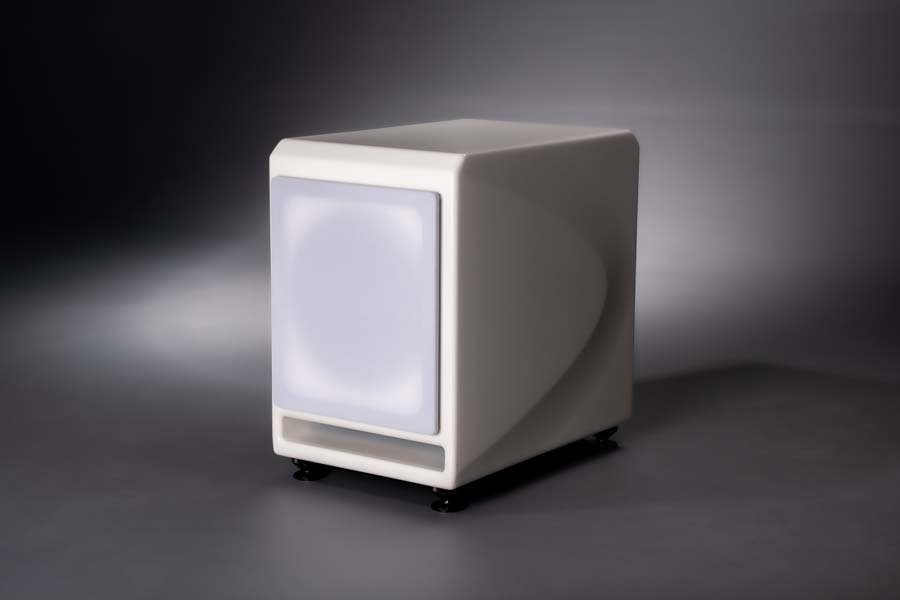
A grille to hide the driver is included, as are excellent spikes and accessories.
CONCLUSION
LōKē is going to appeal mostly to those people who are looking to enhance the bottom end of their existing Wilson loudspeakers (in this case the Wilson Audio TuneTots) but it will work just as well with any loudspeaker system you choose to use it in.
The downside of this being a Wilson Audio subwoofer and the systems it is designed to best suit is that it doesn’t come cheap and as such I feel that those living outside the Wilson ecosystem may well choose to skimp on fit and finish and look for a cheaper solution. Those already in the Wilson ecosystem will see LōKē as the obvious choice for them. However, those living outside shouldn’t discount this sub; it works excellently, is easy to integrate, looks beautiful, and sounds excellent.
The award I’m giving this subwoofer takes into account the fact that for those who already own Wilson loudspeakers, particularly the TuneTots, will want the matching sub and will appreciate that there is a relatively high price to get this. However, for those who are not already owners of Wilson loudspeakers, LōKē will be a slightly less attractive proposition, though it is still a very good subwoofer!
AT A GLANCE
Build Quality:
Well-thought-out packaging made handling such a heavy sub a breeze
Quite a large sub
Very nicely finished
Non-Wilson plate amp but with intuitive and easy-to-follow set-up parameters via a dial
Forward firing driver
Very well damped
Sound Quality:
It does what a good sub is supposed to and integrates seamlessly
Fast and uncoloured sound
Value For Money:
A tough one to call. There’s no doubt the LōKē is an expensive sub-woofer, but those already bought into the Wilson brand, particularly those with TuneTots, will want the matching sub. For those who haven’t bought into Wilson already, LōKē will work well but will, in my opinion, be a less attractive proposition simply because of its cost.
We Loved:
Fit and finish
Easy to set up and change parameters
Lots of parameters to change to get the sound just right
Excellently thought-out packing
We Didn’t Love So Much:
There’s no getting away from it that this is an expensive sub for those that don’t already have Wilson and want to keep that brand throughout their speaker system. However, LōKē does work well and is an option for others
Elevator Pitch Review: LōKē is the smallest of the Wilson subwoofers but is still pretty large. As you would expect, LōKē is finished to a very high standard and is designed to fit with other products from this iconic American brand, though most likely it will be users of TuneTots that will see the most benefit. It is an easy to set up sub with enough parameters to dial it in correctly and quickly via a small (text only) display. There is the option of adding more LōKē subs to your system should you feel the need and, of course, LōKē works well with other speaker systems, though at a considerable cost.
Price: £8,998 in Standard colours; £9,500 in Upgrade colours; £10,998 in Premium Pearl colours

Stuart Smith
SPECIFICATIONS
Woofer: 10 inch Woofer (25.4 cm)
Amplifier Power: 500 watts
Frequency Response (Amplifier): 20 Hz to 250 Hz (+/- 1 dB)
Effective Piston Area: 21.75 in^2
Effective Displacement: 33.42 in^3
Height: 20 3/4 inches (52.71 cm
Width: 13 7/8 inches (35.24 cm)
Depth (With Grill): 21 3/4 inches (55.24 cm
Depth (No Grill): 21 inches (53.34 cm)
System Weight: 110 lbs each (49.9 kg)
Total System Shipping Weight (Approximate): 175 lbs (79.38 kg)














































